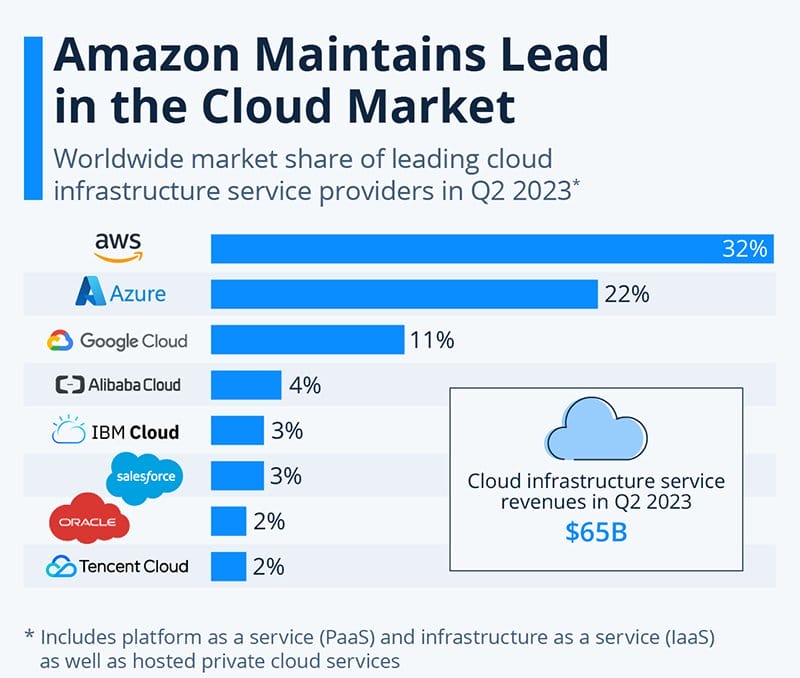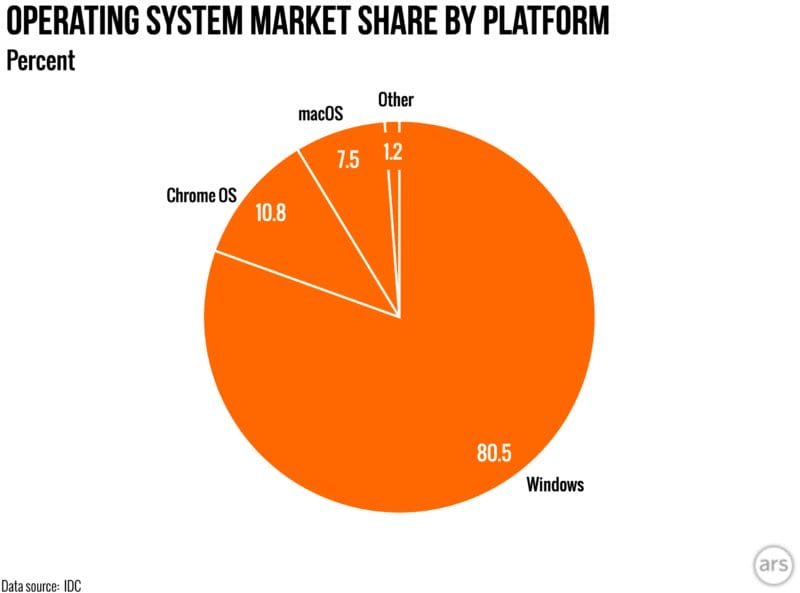Computing Platforms: Definition, Types & Examples
Did you know that the earliest known tool for computation is the Sumerian abacus? (FasterCapital) Fast forward to today and computing platforms have become more powerful, greatly impacting every sector of human life positively.
Understanding the various types, forms, and structures of computing platforms is the doorway to grasping the framework of the digital world.
This article will explore everything you need to know about computing platforms including their types and components.
Let’s get started.
What is a Computing Platform?
A computer platform is a conducive data environment that enables a software application to launch and run smoothly on a computer system.
In other words, a computing platform is a viable company software framework or hardware architecture where fully functional software can run seamlessly.
Computing platforms are a type of technology platform, are next-generation systems that serve as powerful tools that let us use methods and models with geographic data. These platforms come in different types, from simple ones in our phones to super advanced ones like supercomputers.
They can be standalone computers or part of complex networks catering to various user needs and workloads for processing data.
Common computing platforms include features like graphical user interfaces (GUI) relevant for activities like designing, configuring, customizing, and handling data received.
The operating system (OS) plays a significant role in computing platforms, ensuring efficient communication between the central systems of the computer hardware architecture or edge infrastructure.
Types of Computing Platforms
1. Platform as a Service
Platform as a Service (PaaS) is an all-in-one package for building and launching cloud-based services. This computing platform gives organizations everything they need to host applications and run edge computing software.
In simpler terms, PaaS lets developers create software using tools provided by the service rather than building everything from scratch.
PaaS enhances the development of services with various protocols. This approach streamlines the whole process, making it more user-friendly and effective.
Top edge computing platforms, including PaaS, make creating software frameworks easier. By giving them environments and tools, PaaS speeds up starting software and simplifies it.

2. Cloud Platform
Cloud platforms are digital spaces where software or service applications are built and launched using cloud computing infrastructure.
They use virtualization tech to make many virtual machines (VMs) on one server, allowing different customers to run their operating systems and apps on a single server.
People can access these computing services from public and private cloud platforms, including advanced options like Google Distributed Cloud Edge. It is the same as having a shared computer that can do different tasks for different users, making it versatile and accessible.
Cloud platforms work smartly using one computer to do many tasks simultaneously. This scenario is like having an edge computing platform, a shared personal computer that can adapt to different needs.
A cloud platform is flexible and efficient because it divides the work among various virtual computers on the same server.
This way, people can choose whether to share their tasks publicly or keep them private. The whole structure is about making computer services accessible and adaptable for everyone.

3. Hardware Platform
Hardware platforms are the building blocks of computer systems in information technology. Computer hardware comprises different parts that work together, ensuring functionality and security.
Third-party services play a role in enhancing the capabilities of these hardware platforms. Even in small systems, hardware is crucial. Some systems can directly talk to hardware without needing an operating system running on “bare metal.”
This direct interaction with hardware is fundamental to the functioning of various systems, irrespective of the operating system, such as Windows or Microsoft Azure.
A hardware platform is a set of parts that let you run computer programs. Each platform has its language, so programs must be made specifically for that type of platform with its standardized processor and other parts.
Edge intelligence becomes particularly important in computing scenarios, including edge computing, where hardware and software solutions are critical in processing tasks closer to the data source.
In the tech world, we use the term “platform” to talk about hardware and the structures where software programs run.
APIs help ensure the software works smoothly and facilitate efficient data processing using a particular edge computing platform. Understanding this helps us see how hardware platforms fit into the world of technology.
4. Operating System
An operating system (OS) is a computer manager, the first program that starts when your computer does and oversees all other programs. These programs, like services through a computer platform or an application program interface (API), talk to the OS when needed.
The OS implements security protocols to ensure the safe and secure interaction between programs and the system's overall integrity. You can talk to the OS directly using interfaces like a command line (typing) or a graphical interface (icons and buttons).
Many compare the OS to a multitasking wizard because of how it handles computer hardware, software, and edge devices. The OS is smart about scheduling tasks efficiently, making sure everything runs smoothly, and keeping track of costs for things like processor time and storage.
For hardware stuff, like input and output, the OS acts as a middleman between programs and the computer hardware, managing the data flow. While the computer follows the application code directly, it might ask the OS for help or get interrupted.
Operating systems are a type of software not limited to your personal computer systems. You find them in phones and supercomputers, ensuring seamless operation by effectively utilizing resources and coordinating various functions.

5. Mobile Platform
The mobile platform is a toolkit containing everything needed for users to access mobile applications, supporting the creation of IoT applications.
Third-party security services play a crucial role in enhancing the platform's security and ensuring a safe environment for user access.
The buyer gets all the necessary info and credentials, like usernames and passwords, to control and redirect users after the purchase.
iOS (Apple) and Android (Google) dominate the mobile platform market for smartphones. Tablets have a trio of iPadOS (Apple), Android (Google), and Windows (Microsoft).
Application developers and Google Cloud services contribute significantly to the functionality and innovation of these platforms, shaping how users interact with technology.

6. Third Platform
Think of the “Third Platform” as an excellent tech upgrade. This platform is a mix of mobile, social media, cloud, and big data with a touch of the Internet of Things and machine learning.
The Third Platform was coined by IDC around 2013 and it is changing how we connect with technology.
Unlike the past, where tech was mainly for businesses, the Third Platform flips the script. This computing platform is all about meeting what users want first, then adjusting for businesses later.
The Third Platform evolution is not just changing our gadgets. It is shaping how companies design their hardware and software, aligning more closely with what users want in an IoT device.
This approach emphasizes easy and secure access, with technology such as the Alef Private Edge Platform that adapts to our needs.
7. Client/Server Platform
The client/server platform is just like a teamwork setup. Your computer, the “client,” asks for things, and another computer, the “server,” provides what is needed. This platform is like a chat between your device and the server, ensuring local data processing runs smoothly.
Whether you are online, sharing files, or doing other digital stuff, this teamwork keeps things working well together.
The client/server partnership facilitated by edge computing software and edge architecture is the engine that powers our digital world, helping devices communicate and cooperate effectively.
This collaboration includes solutions like Eclipse Lofog or Eclipse Foundation that form the backbone of numerous digital processes, ensuring the smooth exchange of information.
Components of the Computing Platform
A computing platform is like a team, where each component has a vital role. Every computer, from your regular device to a supercomputer, has these essential team members.
1. Processor (The Brain)
The processor serves as the captain of the squad. Your operating system (OS) powers the processor and takes on the role of making calculations and managing data for better performance. The processor is the decisive force that guides the team through various tasks.
2. Operating Memory (The Strategy Board)
The operating memory acts as the quick-thinker, temporarily storing instructions and essential data. This rapid access resource ensures swift decision-making and efficient task execution by the processor.
3. Storage (The Locker Room)
Think of storage as the locker room, where processes and data find a more permanent residence. This team member maintains information for the long term, contributing to the continuity of tasks and processes.
4. Input/Output Devices (The Interactors)
Input and output devices function as messengers, facilitating seamless communication between computers and users and minimizing latency.
Whether tapping on a tablet or typing on a computer, they enable vital interaction and define the user experience for companies and internet users.
To categorize these teams, you have to look at their operating system, which is like their rulebook, offering a wide array of instructions.
Operating systems have routines for starting and guiding how programs work, ensuring efficient processes and lower latency.
The operating system's basic procedures load into the working memory, helping the system prepare its devices and decide how to handle information and requests.
Explore Further
- What is Cloud Computing?
- What is a Data Platform?
- What is a Commerce Platform?
- Top Cloud Service Providers
- What is a Cloud Server?
- SaaS Vs. Cloud
- What is a Hybrid Cloud?
- Private vs Public Cloud
- Cloud Computing Statistics
